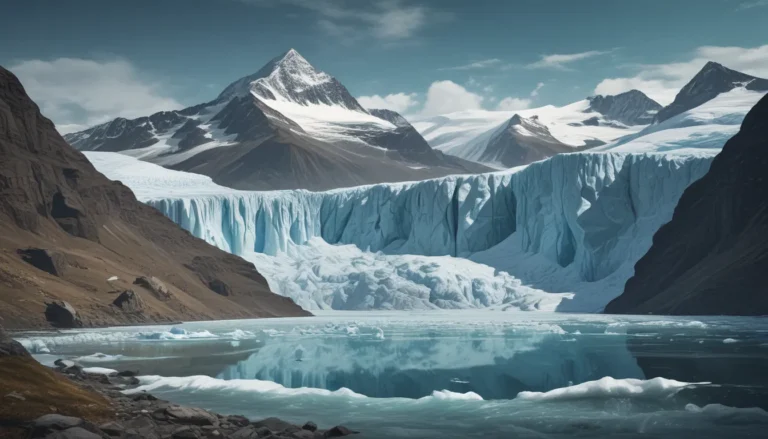A Note About Images: The images used in our articles are for illustration purposes only and may not exactly match the content. They are meant to engage readers, but the text should be relied upon for accurate information.
Temperature inversion, a captivating natural occurrence, flips the conventional temperature pattern in the atmosphere on its head. Rather than cooling as altitude increases, temperature inversion causes the air to warm up with elevation. This inversion not only influences local weather conditions but also impacts air quality and the behavior of sound waves.
In this article, we will immerse ourselves in the world of temperature inversion and unveil 11 astonishing facts that will surely captivate your curiosity. From exploring its causes and types to understanding its effects on various environmental aspects, you will gain a comprehensive insight into this intriguing phenomenon. So, brace yourself for a journey through the realm of temperature inversion!
The Foundation of Temperature Inversion:
- Temperature inversion: when warm air traps cool air, resulting in fog, smog, extended sound travel, and aviation disturbances.
- Nature’s Cool Air Traps: valleys and basins serve as hotspots for temperature inversions, leading to weather surprises that affect our daily routines.
Understanding Temperature Inversion
Temperature inversion disrupts the standard temperature trend by flipping it upside down, causing warmer air to layer above cooler air. This inversion layer is pivotal in shaping weather patterns and air quality dynamics.
Nighttime Allure of Temperature Inversion
Under clear, calm nighttime conditions, temperature inversions take center stage. The Earth’s surface cools rapidly, creating a cascade effect where cooler air settles beneath a warmer layer.
Taming the Fog and Clouds
When a temperature inversion occurs amidst moist conditions, warmer air acts as a lid, trapping cooler air below and preventing the dispersal of moisture. This scenario culminates in the formation of fog and low-level clouds.
Impact on Air Quality
Temperature inversions can spell trouble for air quality as pollutants from vehicles and industries get trapped close to the ground. This inversion layer gives rise to poor air quality and the formation of smog.
Temperature Extremes Unveiled
Temperature inversions unveil a stark contrast in temperatures across various elevation levels. While the surface experiences a chill, a few feet above, warmer air blankets the region due to the inversion layer.
Journey of Sound Waves
During a temperature inversion, sound waves find themselves confined within the inversion layer, leading to extended travel distances. This phenomenon, dubbed acoustic ducting, facilitates long-distance sound propagation.
Role in Phenomena Formation
Temperature inversions play a pivotal role in shaping temperature-dependent phenomena like thermal inversions and mirages. Thermal inversions occur when warmer air hovers above cooler air, while mirages stem from light bending due to air temperature gradients.
Impact on Atmospheric Stability
Disrupting the norm, temperature inversions threaten the stability of the atmosphere, potentially giving rise to turbulent weather conditions. This instability can fuel the genesis of convective storms such as thunderstorms and hailstorms.
Managing Air Pollutants
Air pollutants trapped in the vicinity of a temperature inversion struggle to disperse, elevating concentration levels. This accumulation poses health risks and environmental hazards, underscoring the urgency of mitigating pollution.
Navigating Aviation Complexities
Temperature inversions pose challenges for aviation operations, manifesting as low visibility and turbulence that can disrupt schedules and compromise safety. Pilots must remain vigilant to navigate through these conditions successfully.
Embracing Nature’s Traps
Valleys and basins establish themselves as natural cool air traps, fostering the formation of temperature inversions. The surrounding terrain further accentuates this phenomenon, reinforcing the creation of inversion layers.
Conclusion:
Temperature inversion stands as a compelling force shaping our environment and weather dynamics. From influencing air pollution to impacting aviation and agriculture, this phenomenon subtly weaves into our everyday lives. By acknowledging the causes and consequences of temperature inversion, we can unravel the intricacies of our atmosphere and strive towards mitigating adverse effects.
FAQs:
- Causes of Temperature Inversion: A result of clear skies, calm winds, and cool surface temperatures culminating in a stable layer of cool air beneath warmer air.
- Impact on Air Pollution: Trapping pollutants near the surface, temperature inversion fosters smog formation, deteriorating air quality and posing health risks.
- Aviation Ramifications: Creating hazardous flying conditions like low visibility and turbulence, temperature inversions demand heightened pilot awareness for secure travel.
- Crop Protection: Cold air settling during temperature inversions can endanger crops with frost, prompting farmers to employ protective measures like wind machines and heaters.
- Mitigation Endeavors: While natural, temperature inversions’ adverse effects can be minimized by promoting cleaner technologies and reducing emissions for healthier air quality.
Your Contribution Matters
Our dedication to delivering trustworthy and captivating content hinges on the invaluable input of real users like you. Each fact shared on our platform emanates from diverse insights, ensuring a tapestry of authentic and fascinating information. Delve into this world of knowledge with confidence, as our commitment to quality and authenticity guides your exploration and learning journey.






